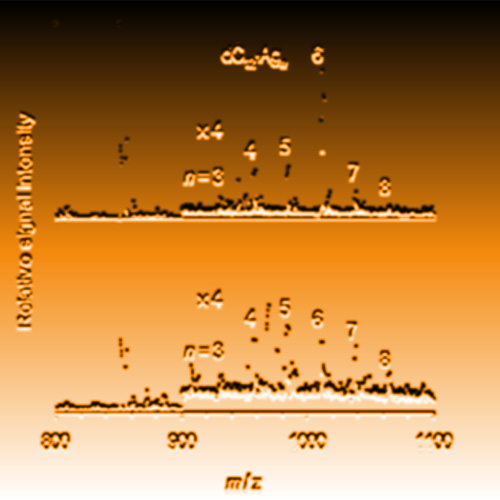A Highly Charged Ag6 4+ Core in a DNA-Encapsulated Silver Nanocluster
18-Feb-2010
Chemistry A European Joournal, 2010, 16, 11, 3285 - 90 published on 18.02.2010
Chemistry - A European Journal, online article
Small metal clusters fill the gap between the atomic scale and the metallic state with its distinctive bulk phenomena.[1] Besides being of high fundamental interest, this intermediate character of metal clusters also gives rise to unique and potentially useful electronic, magnetic, and optical properties.[ 2] To bring these properties to real-world applications, however, the clusters must be stabilized and prevented from spontaneous aggregation and other decomposition reactions. One successful strategy relies on the immobilization of metal clusters on surfaces.[3] Another approach stabilizes the clusters by the attachment of protective ligands.[4] Quite often the same ligands can also serve as templates for the formation of the metal clusters.[4] This favorable situation is realized for a manifold of silver nanoclusters, which are synthesized by the reduction of silver salts in the presence of templates, such as poly(amidoamine) dendrimers,[5] poly- (acrylic acid) derivatives,[6] poly(methacrylic acid),[7] peptides,[8] or DNA.[9] The thus formed nanoclusters contain only a few Ag atoms and hence exhibit molecule-like properties,[ 10] in contrast to the conventional larger nanoparticles, which more closely resemble the metallic state.[11] In particular, the strong fluorescence of silver nanoclusters has attracted significant attention because of its potential practical applications.[5–10] Among the various species investigated so far, silver nanoclusters encapsulated by the single-stranded oligonucleotide dC12 arguably constitute the most promising system thanks to their very high photoemission rates and their excellent photostability.[12]



